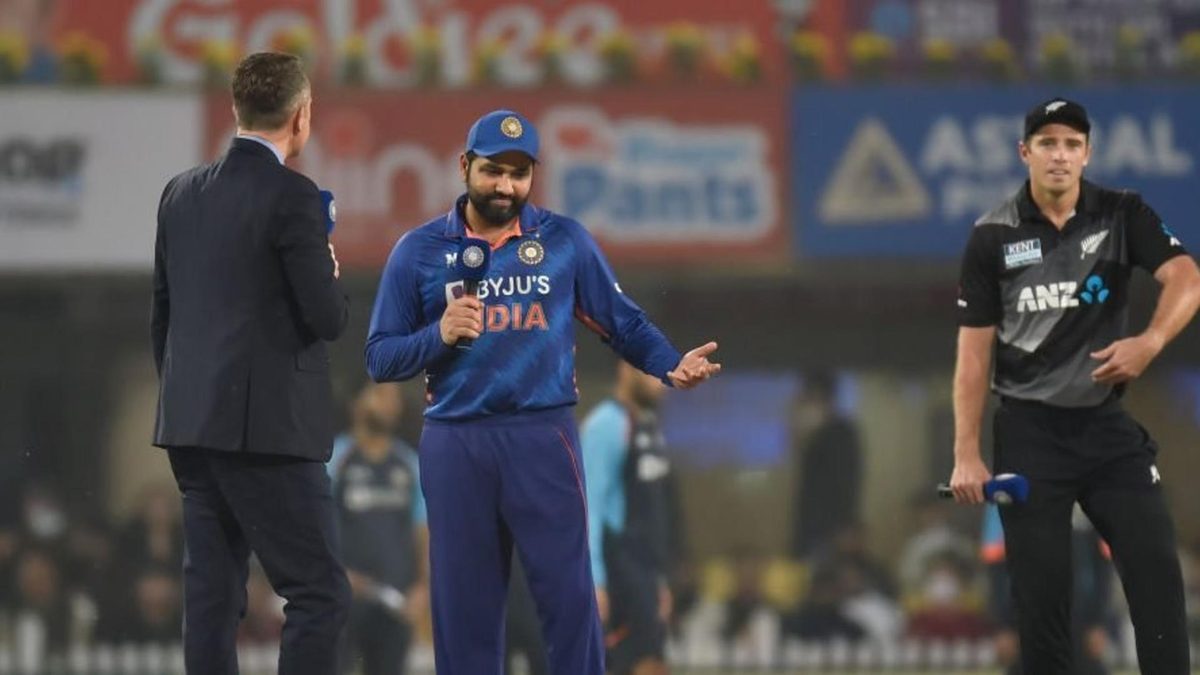
Congratulations are in order as India have defeated the T20 World Cup runners-up in a bilateral series less than a week after the Black Caps were left dejected against Australia. But, what has really come out of the triumph, asks Sarah Waris.
Yet another PayTM T20I series hosted, yet another PayTM T20I series won. India’s sixth since the beginning of 2018, with just a defeat at the hands of Australia to show for in the last three years at home. Celebrations as Rohit Sharma displayed that he indeed was the best player after Virat Kohli to take over the leadership role in the format, and a huge round of applause for new head coach Rahul Dravid.
The two matches have had plenty of memorable moments that have seemingly erased the pain of India’s first-round ouster from the T20 World Cup. KL Rahul smashing his fourth fifty in the last five innings, R Ashwin’s economical comeback, the promising debut of Harshal Patel, and the finishing skills of Rishabh Pant to go with the overall energy of the side after what was a disappointing campaign. Coupled with the fact that the win came in the absence of a number of key players who were rested for the series, and there is enough evidence to suggest that come the next World Cup, less than a year away, India will once again start as one of the favourites. After all, despite what the results in the tournament suggest, they are not a bad side, and it was probably the toss, and luck, or the lack of it, that did them in.
But if it was luck that played a huge hand, shouldn’t it be factored in as well as they go to the drawing board to figure out the match-ups and the pool of players that will be on their radar in the upcoming months? I’m not talking about controlling destiny, because well, that’s naive. I’m talking about being ready for what it can possibly throw up when you least expect it. It’s about acknowledging that sometimes you might be forced to move away from your comfort zone in a pressure situation and that it’s best to prepare yourself for the worst. Even if it entails departing from your template and sacrificing a few games along the way for the bigger picture, the World Cup in this case.
When India lost to Pakistan and then New Zealand in the recent tournament, both losses coming after they were asked to bat first, it was down to the heavy dew that existed in the second half, which made batting second easier. Maybe. But it’s also true that batting first has been a long nemesis of the side, and eliminating their weakness should remain their top priority ahead of the next event.
Which is why this T20I series win seems of little value, especially when you consider the fact that India were offered a chance to work on this stumbling block, which led to their downfall in the UAE, as they won both the tosses in the series. But by opting to field first on both occasions, the India team let go of two vital opportunities to learn from their past mistakes, choosing to focus on the now instead of the future.
How bad is it?
In the last three years (since November 20, 2018), India have played 45 T20Is, have batted first 23 times, won 10 of those games and lost 11, giving them a win/loss ratio of 0.909. In the same period, Australia (1.142), South Africa (1.272), New Zealand (1.363), England (2.33) and Afghanistan (3) all have won more games batting first than they’ve lost.
In contrast, India have won 16 out of the 21 T20Is in which they have chased. Their w/l ratio while batting second rises to an astonishing 4, which is the best among all Test-playing nations. England are second on this list, with a ratio of 2.250. While it indicates India’s dominance while chasing, it also highlights how rivals receive a significant boost when India are sent in to bat first.
The Men in Blue have scored 200+ runs just four times while taking guard first up, making less than 170 on 15 occasions in the last three years. On the other hand, they have successfully chased more than 155 seventy percent of the time, including successfully chasing more than 190 thrice.
A lot of it can be pinpointed to the difference in pacing the innings between batting first and chasing. In the last three years, the India batters have had a strike rate of 122.34 in the Powerplay overs when batting first, with notable teams such as England and Pakistan having a worse strike rate than them. However, India’s strike rate falls to 119 from overs seven to 15. It means they have more catching up to do in the death overs. In contrast, when a target is in front of them, India begin clinically — striking at 140.42 in the powerplay overs, which rises to 169.82 at the death.
The issue of batting without a target, thus, remains a lingering one, with the overall attitude of the side changing from innings to innings. It could be due to the presence of a number of anchors in the side, who leave the finishing duties to others and in turn, never get going, or just the overall sense of confusion over what remains a challenging target or it could be dew. It could be none of it yet all of it, but when a flaw persists you try to learn and improve along the way, in case it gets the better of you when you least want it to. India had that chance. India never took it, and while a PayTM series is won, not a lot has been conquered.








